Mike Kellner
Reviews By Author
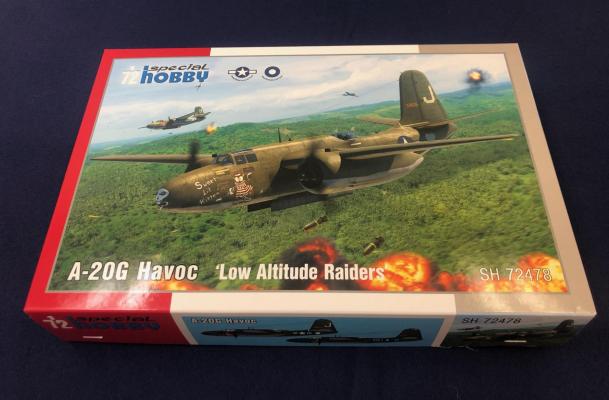
|
A-20G Havoc "Low Altitude Raider"Published:
The Douglas built A-20 havoc first flew on October 26, 1938. Designed by Jack Northrop and Ed Heinemann, Douglas produced over 7000 of them, making it the most produced light bomber. The Douglas A-20 Havoc (known as the Boston by the British) was a light attack bomber, powered by two R-2600–23 engines, each producing 1600 hp and turning a 13' 3” Hamilton Standard propeller. Riding on a wing span of 61 feet 3 1/2 inches, it reached a maximum speed of 325 miles an hour at 14,500 feet. Originally ordered by the French, the American Army Air Corps quickly caught on and placed an order three months later. Nearly half of the production run went to the Soviet Union under the Lend-Lease Act. Many feel it was one of the most versatile combat aircraft of the war, being in service from… more |
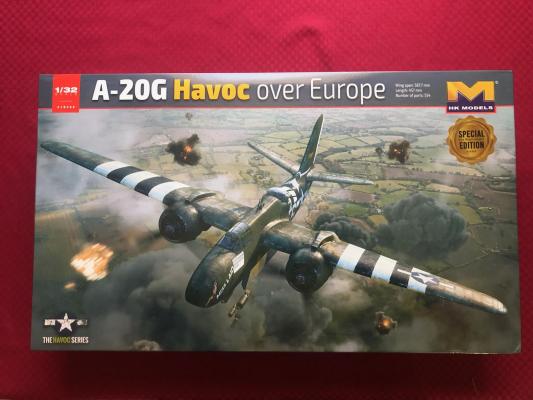
|
A-20G HavocPublished:
The A-20 G of this kit was built by Douglas under the company designation DB-7. 7478 were built, with nearly a third of them going to the Soviets. It served in many theaters, operated by the English, French, Americans, and Soviets. It had a crew of three, with its first flight being January 23, 1939 and being retired by the Brazilian Air Force in the late 1950s. A P-70 night fighter variant was built as a stop-gap until the P-61 Black Widow became available. The A-20G had a top speed of 317mph, and a cruise speed of 280mph. It was powered by two Wright R-2600 engines with three-bladed Hamilton standard propellers and had a wing span a little over 61 feet with a length of almost 48 feet. The model comes in a nice, sturdy box. It is molded in light gray plastic and boasts 554… more |
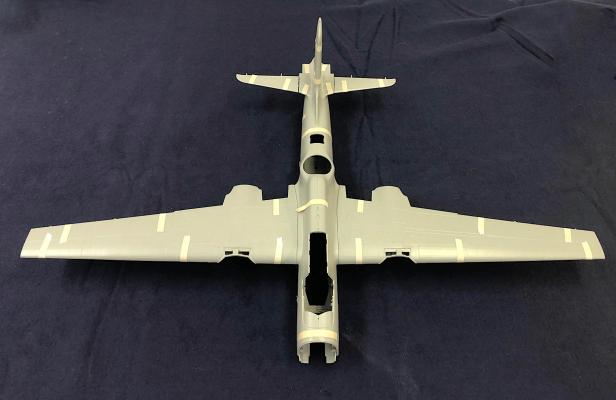
|
A-20G Havoc Test ShotPublished:
The Douglas built A-20 havoc first flew on October 26, 1938. Designed by Jack Northrop and Ed. Heinemann, Douglas produced over 7000 of them, making it the most produced light bomber. Originally ordered by the French, the American Army Air Corps quickly caught on and placed an order three months later. Nearly half of the production run went to the Soviet Union under the Lend-Lease Act. Many feel it was one of the most versatile combat aircraft of the war, being in service from before the war, all the way through to the end, serving in nearly every theater and utilized by most Allied nations. Its roles included bombing, ground attack, strafing, torpedo attack, photo recon, night intruder, and interceptor. The test shot is highly detailed, and came in light gray plastic… more |

|
S. M. Unterseeboot U-9Published:
When I heard a 1/72 scale World War I submarine kit was coming out, I was excited. It ended up being the U-9 class from Germany. The kit is molded in light gray plastic and comes packed in a nice large, sturdy box. In fact, it will fit back in the box all the way until the completion of the build. When I first saw the instructions I thought they were ruined, but they are intentionally given a distressed look with yellowed pages, coffee mug rings and scotch tape making them look as if they’re really old. The hull comes in two halves plus a deck and reminds me a lot of the structure of the Titanic with its large plates and rivets. The kit’s parts are very finely molded with virtually no flash. There are many options such as open and closed torpedo tubes, retracted or upright… more |
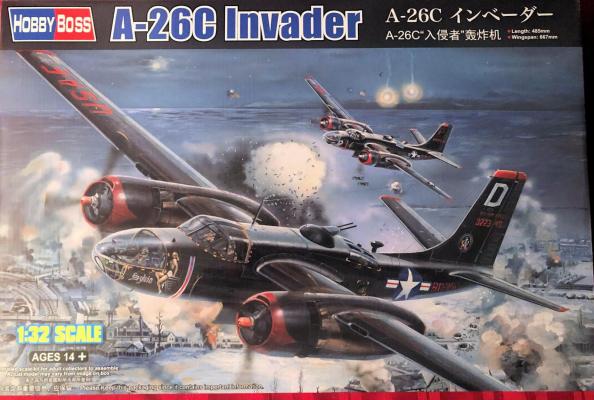
|
A-26C InvaderPublished:
The A-26 is a lesser known twin engine bomber from World War II which got its ancestry from the A-20 Havoc. After World War II it was re-designated B-26 and also served in Korea. At first glance Hobby Boss’s 1/32 scale A-26C Invader is impressive. The kit is molded in light gray plastic, with crystal clear transparencies and rubber tires. There are decals for two options, a night black Invader and a natural metal one. All parts were nicely wrapped in plastic but on my sample, the trim control wheel was badly damaged. Assembly was straightforward and went fairly quickly. The kit recommends 150 gm of weight to keep it on its nose so I decided to use the cast-metal nose gear and wheel well from Scale Aircraft Conversions (Kit #32155), which supplied 42 gm of ballast. I… more |
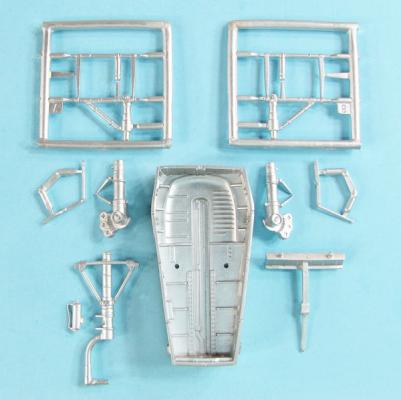
|
A-26B Invader Landing Gear SetPublished:
The SAC replacement gear seems to be an exact replica of the parts from the Hobby Boss A-26 Invader kit. The metal is soft but easy to clean and file. The set consists of main gear, nose gear, and nose wheel well. I decided to use the nose gear and its well to help balance the model since I have never tolerated tail sitters. The nose gear well needs a little filing to fit. Even after adding more weight, the airplane barely stood on its nose, so I am glad I used it. I don’t believe you could get enough weight in the nose without it. The SAC set claims it weighs 42 grams and the kit recommends 150 grams, so the builder has to make up the 108 gram difference. After finishing the model, because of its weight I might’ve been better off using the metal main gear also. … more |
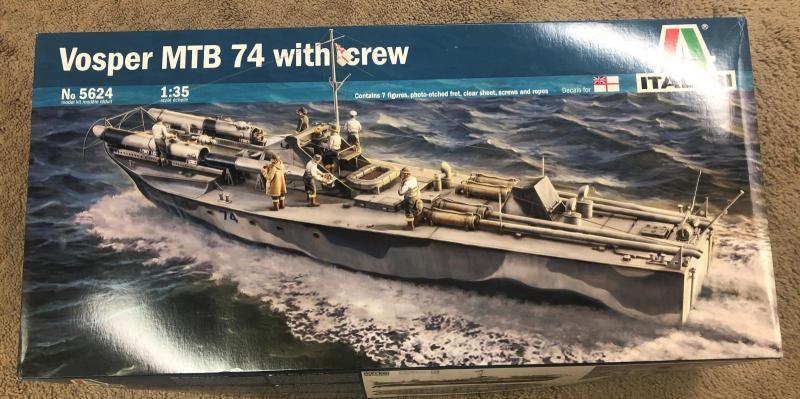
|
Vosper MTB 74 with Crew- Part 2Published:
In Part One, I alluded to some issues I had with the windows in the kit so I’ll start with that. The portholes had acetate to represent the glass, which turned out to be larger than the flat spots they were intended to nestle into, so most had to be trimmed down. The same needed to be done for the ones that were in the deck. Although the deck is meant to be screwed down, I elected to glue it as well, and discovered a section on each side of the deck that had flash which I hadn’t caught, and I paid for that by having to remove a glued-up deck just for that purpose, but in the end it turned out OK. Word to the wise: make sure that’s cleaned up before putting the deck on. … more |
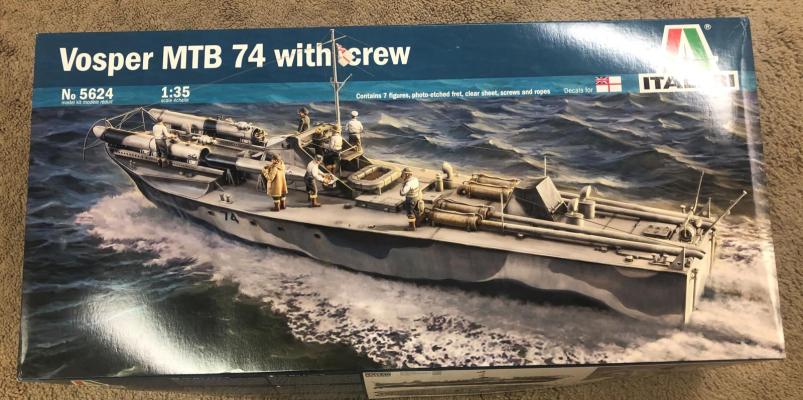
|
Vosper MTB 74 with Crew (Part 1)Published:
Italeri’s 1/35 scale version of the Vosper MTB 74 which was used on the 28 March 1942 Operation Chariot Saint Nazaire raid comes in a big box. It was a specially configured boat having most of its offensive armament removed and having two torpedo tubes added to the foredeck. It also had special muffler silencers added. It successfully hit the nets which protected the docks, torpedoed the lock gates and achieved its mission, but was sunk on its way back home. Chariot achieved its goal of disabling the only dry dock in German-occupied France which could handle the Tirpitz so that forced her to return to Germany for any repairs. The kit is molded in gray plastic and includes a fret of photoetched details, a decal sheet, a clear sheet, screw, ropes, and seven crew figures. The hull… more |
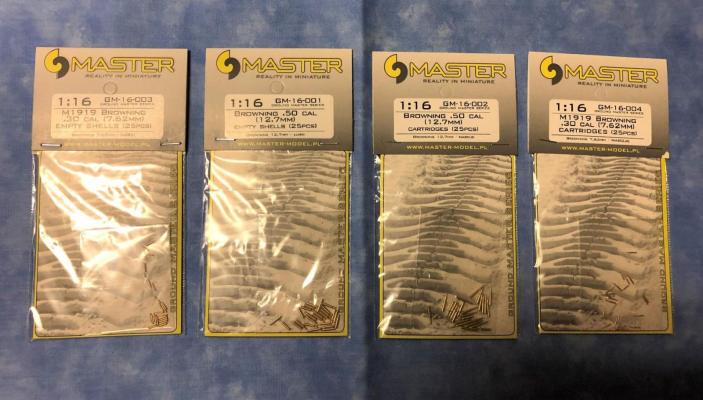
|
Browning .50 and .30 Caliber Shells and CartridgesPublished:
Total number of parts: 25 each package. As I’m scratch building a 1/16 scale PT boat, when I saw these neat little shells and cartridges I was curious. What arrived was 4 small packages which included 25 shells or cartridges each in both .50 caliber and .30 caliber. For a large scale I was surprised at how small they were. I was able to compare the .50 caliber ones with a real .50 caliber cartridge and shells, and there is a gigantic difference in size. These detailing parts are made from brass, have the right dimensions for their scale, and the shell cases even have a hollowed-out end on them. I have photographed them with a real shell just to show the relative size of them. Overall they are very consistent and I’ll bet they will look awesome on any 1/16 scale vehicle… more |
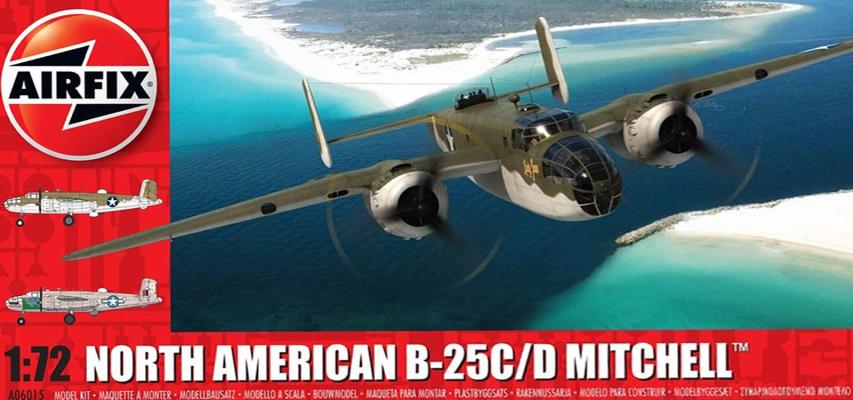
|
North American B-25C/D MitchellPublished:
A versatile twin-engine medium bomber, the B-25 was to find its first fame on April 18th, 1942, as the Bomb Group led by Jimmy Doolittle flew them off the carrier USS Hornet and made the first attack on Tokyo. Mitchells were flown by many of the United States’ Allies, were used throughout WWII, and were in service up into the 1960s. The new Airfix B- 25C/D was sorely needed in 1/72 scale. The kit comes in a sturdy box with nice box art and is cast in gray plastic with finely molded recessed panel lines. Although each sprue was individually wrapped in clear plastic bags, one half of my sample’s fuselage was warped, and this ended up being a challenge throughout the build. The kit comes with an option of an open or closed bomb bay, and if you decide to open it, 500-pound… more |
